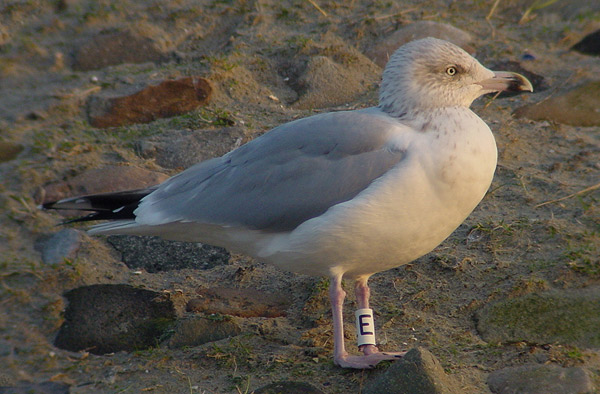 Gulls in NW Europe
Gulls in NW Europe
(last update: September 25, 2011
Herring Gull (argenteus) E adult, November 2002 - October 2017, Scheveningen, the Netherlands.
Ringed white E, like several other birds and therefore not to identify individually (but most likely this single bird lingers around most of the year). Upperpart grey tone indicative for local origin.
below: E (argenteus) October 22 2017, Scheveningen, the Netherlands.
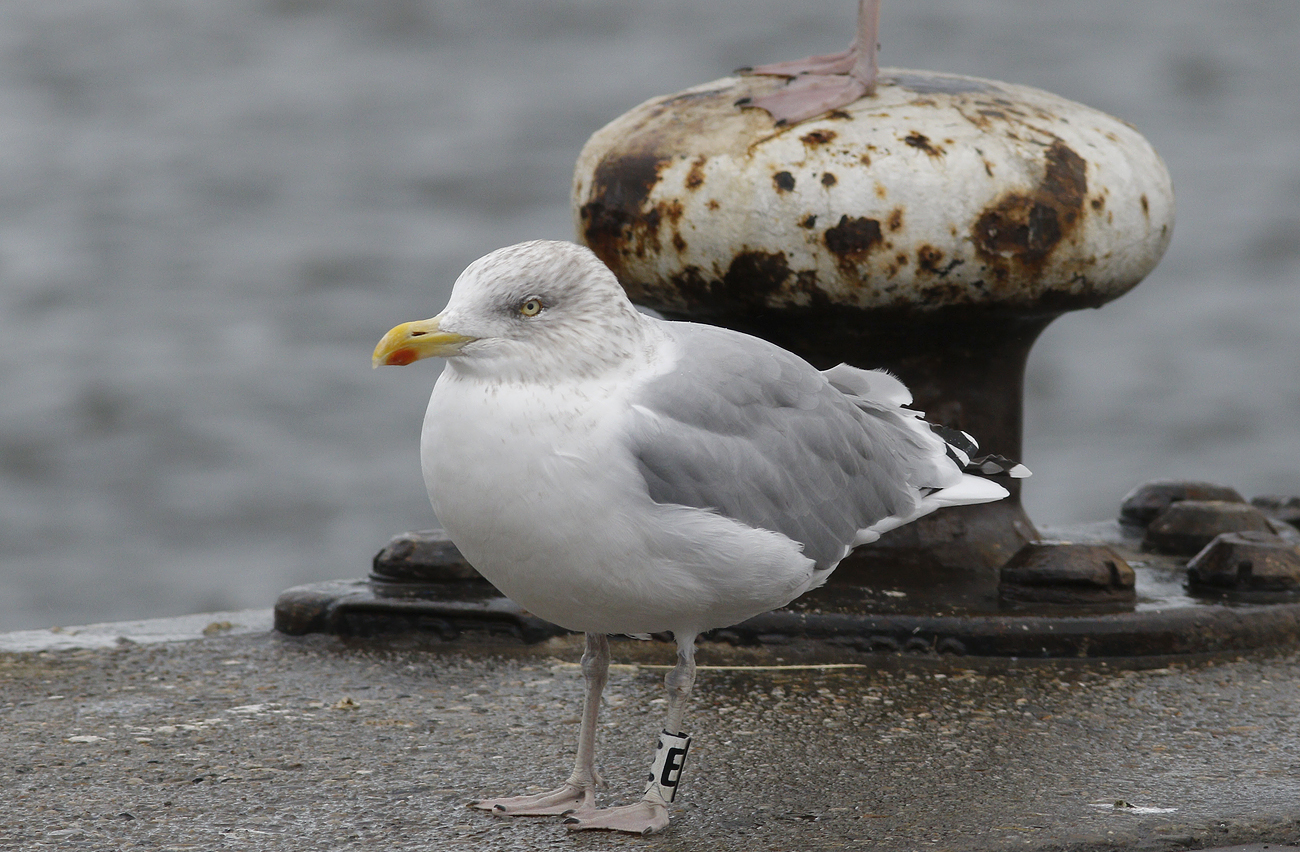
below: E (argenteus) October 31 2016, Scheveningen, the Netherlands.
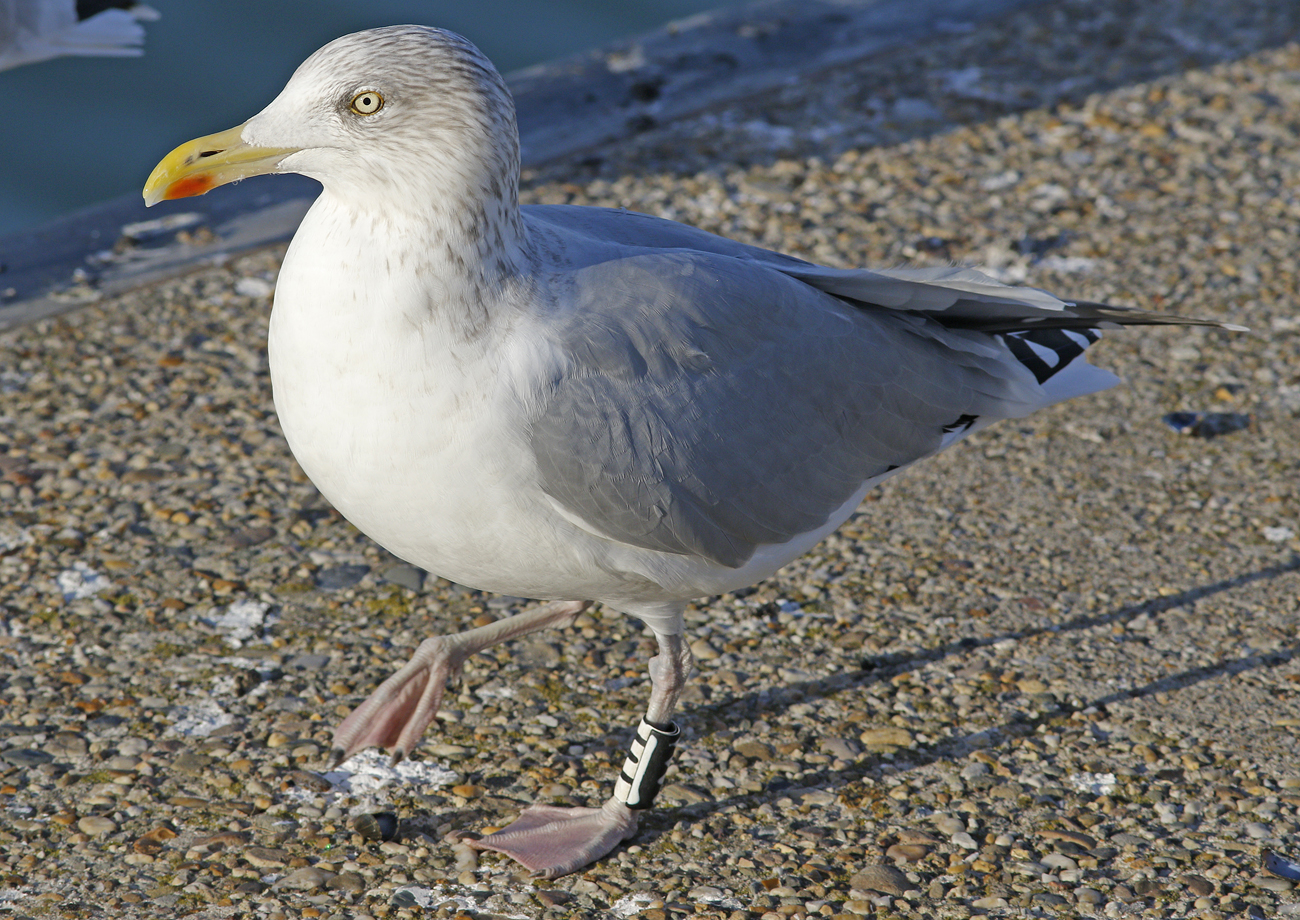
below: E (argenteus) October 22 2012, Scheveningen, the Netherlands.
Ring getting old.
below: E (argenteus) November 10 2011, Scheveningen, the Netherlands.
P8 fully grown, P9 reaches P8 tip.
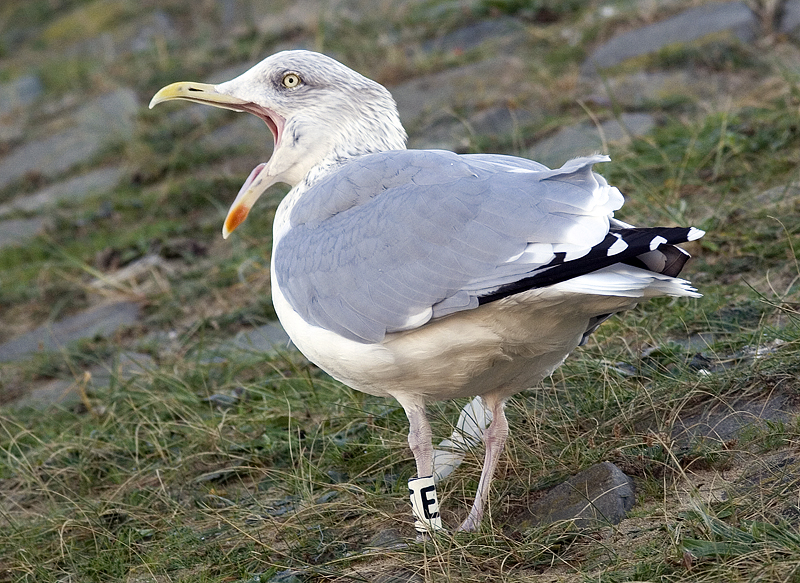
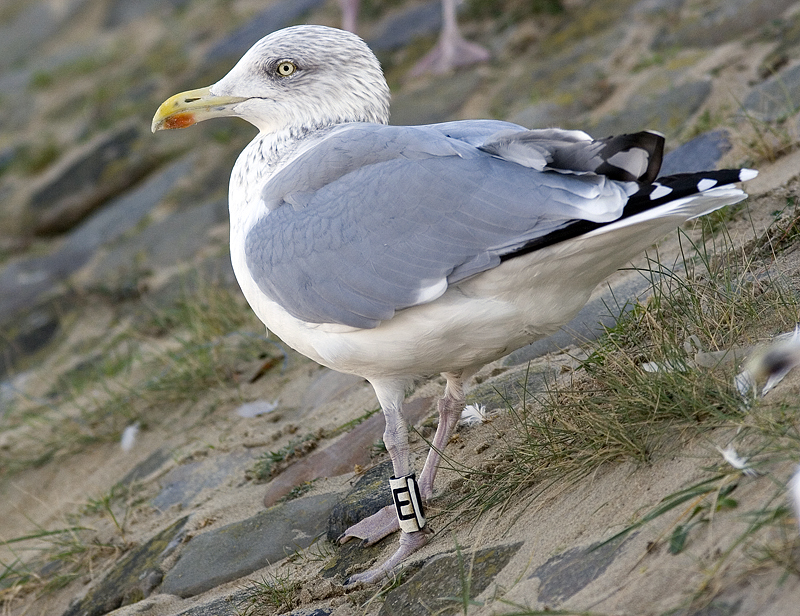
below: E (argenteus), October 11 2011, Scheveningen, the Netherlands.
P6 fully grown; no old primaries left. Active moult in rectrices.
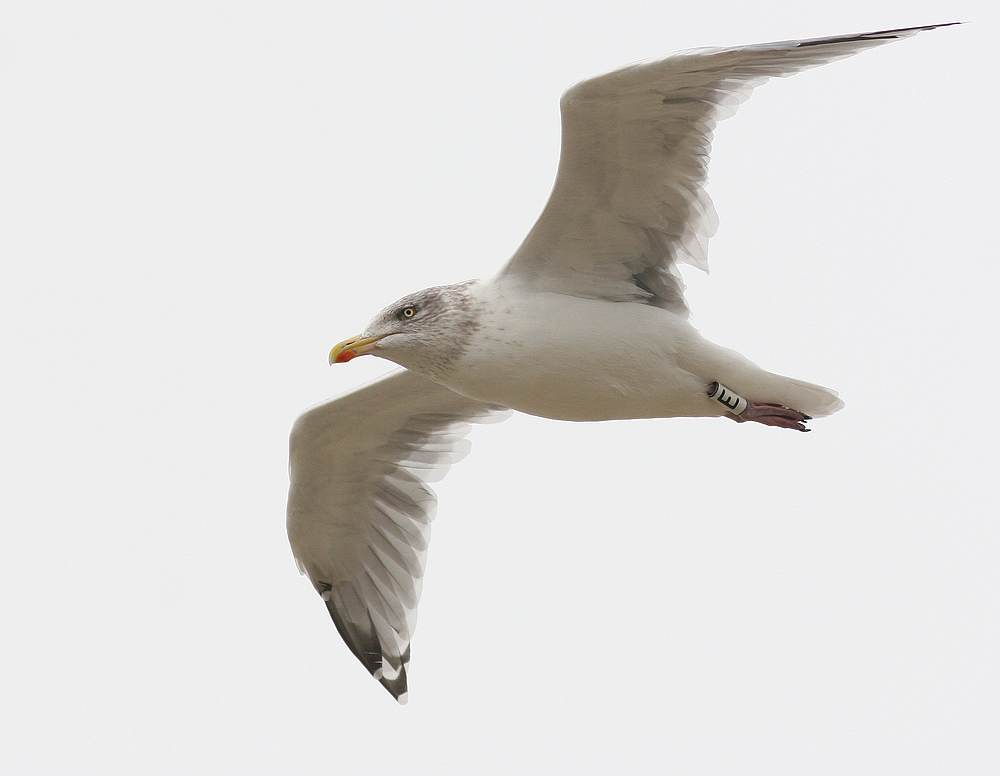
below: E (argenteus), April 25 2003, Scheveningen, the Netherlands.
The scapulars, the wing-coverts and the tertials appear completely adult-like grey. The primaries show a clear mirror on both P9 and P10. The outer primary-covert are dark centred, unlike the grey adult-like primary-coverts of adult birds. In most near-adults the primary coverts are not completely grey but still show a black centre in the outermost greater primary coverts. The tail-feathers are all white.
From January to April, sub-adult and adult argenteus moult to so-called "summer plumage" and this bird clearly shows missing feathers around the eye, accentuating the yellow-orange orbital ring. By April, the head and under-parts appear all-white. The tail-feathers, wing-coverts and primaries are not replaced in this partial spring moult, therefore most birds strongly resemble "winter birds", although the white primary tips wear away and dark patches start to bleach. The iris turns bright yellow in many sub-adults, the orbital ring turns yellowish-orange and the bill will become predominantly yellow with a red gonydeal spot and limited black markings along the culmen by April.
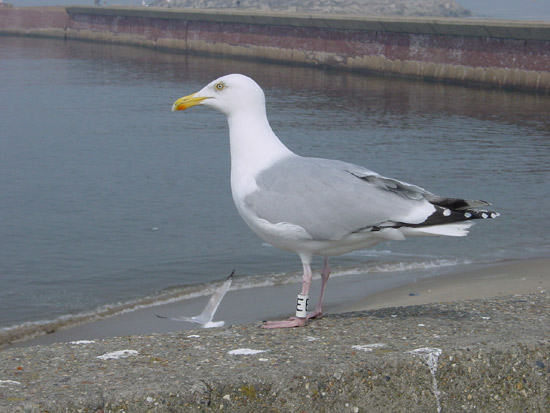
below: E (argenteus), November 15 2002, Scheveningen, the Netherlands.
A 4cy argenteus ringed in the Netherlands as pullus at Maasvlakte, about 15 km from Scheveningen. In many respect this bird resembles an adult with an obvious mirror on P10 and all grey upper-parts, wing-coverts and tertials. The bill has a clear immature dark bill-band.
From June to October, sub-adult Herring
Gull have a complete moult to so-called "winter plumage".
As long as the old outer third generation primaries are visible (until
August), ageing as 4cy is rather straightforward. From November onwards,
4cy birds much resemble adult birds, except that the bare parts still show
immature features: the black bill-band is obvious, extending over both
upper and lower mandible. On average, this plumage develops a more
pronounced winter 'hood' than in full adults: dense streaking on head,
especially around the eye and in the hind-neck. The upper-parts,
wing-coverts and tertials appear adult-like grey from 4cy October onwards.
The fourth generation tail-feathers are plain white.
The new fourth generation primaries are similar to the adult primaries,
although the primary tips may appear slightly smaller, but otherwise
similar in pattern: grey inner-wing and black outer-wing. Both P9 and P10
show a mirror. P5 shows small black sub-terminal markings in argenteus,
concentrated on the outer-web as a clear-cut black angular spot and rarely
extending on the inner-web as a diffuse streak. There may be some black on
P4 as well. Adult argenteus show a different pattern in the outer
primaries, compared to northern argentatus. In argentatus,
especially from northern Scandinavia, the black marking on P5 is very
limited and diffuse or this is sub-terminal markings are completely
lacking on P5.
Argenteus has more black in the outer primaries, including a black
band on the top of p10 in most birds, dividing the tip from the mirror. If
the black sub-terminal band on P10 is broken, the outer-web of p10 still
shows black marking. Argentatus normally lacks sub-terminal
markings on the outer-web of P10.
The scapular coverts are plain grey, lacking white crescents. The tertials
show obvious white tips. The iris is yellow. The bill is yellow with a red
gonydeal spot confined to the lower mandible. The orbital ring is
yellow-orange or orange-red. The legs are flesh-pink.
